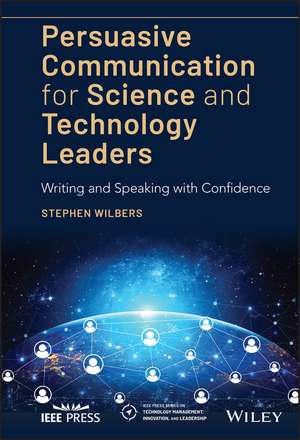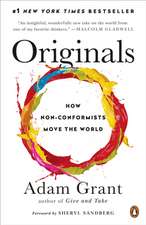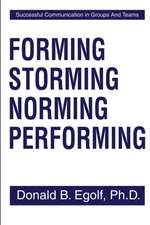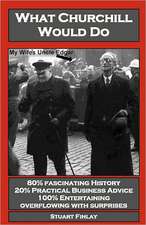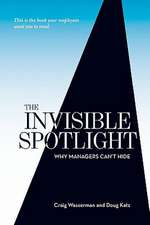Persuasive Communication for Science and Technology Leaders – Writing and Speaking with Confidence: IEEE Press Series on Technology Management, Innovation, and Leadership
Autor S Wilbersen Limba Engleză Hardback – 3 noi 2022
Preț: 540.58 lei
Preț vechi: 587.59 lei
-8% Nou
103.45€ • 112.33$ • 86.90£
Carte tipărită la comandă
Livrare economică 22 aprilie-06 mai
Specificații
ISBN-10: 111957322X
Pagini: 256
Dimensiuni: 152 x 229 x 17 mm
Greutate: 0.51 kg
Editura: Wiley
Seria IEEE Press Series on Technology Management, Innovation, and Leadership
Locul publicării:Hoboken, United States
Descriere
Explore this insightful guide to the development of persuasive leadership skills perfect for students and managers in technical fields
Many technical managers receive little to no training in the persuasive arts. While they#re technically skilled, they lack the ability to engage effectively with an audience through language. Managerial Communication for Technological Leaders: Persuasive Writing and Speaking delivers a thorough treatment of how to develop convincing oral and written communication strategies with any audience. The book is organized as a series of lessons to instruct the reader on how to engage with people in an effective, informative, and persuasive way. It also includes references for grammar, language use, and stylistic intent.
The distinguished speaker and author offers readers information about the broader importance of language and how its proper or improper use can affect one#s persona and professional influence. Readers will learn to convey information clearly and accurately, as well as in a way that inspires and leaves a lasting impression. Readers will also benefit from the inclusion of:
- A thorough introduction to knowing and connecting with your audience, using voice, tone, and point of view for results, and engaging your reader with compelling ledes
- An exploration of explaining complex technologies clearly, succeeding with challenging writing assignments, and basic strategies for persuasive writing
- Practical discussions of writing in delicate situations, using Rogerian persuasion to resolve conflict, and writing with authority, personality, and style
- An examination of speaking effectively while thinking on your feet, including how to create a safety net and how to recover from a momentary lapse
Perfect for advanced undergraduate and graduate students in technical fields, like engineering, mathematics, science, and technology, Managerial Communication for Technological Leaders: Persuasive Writing and Speaking will also earn a place in the libraries of technical managers who seek to better connect with your audiences.
